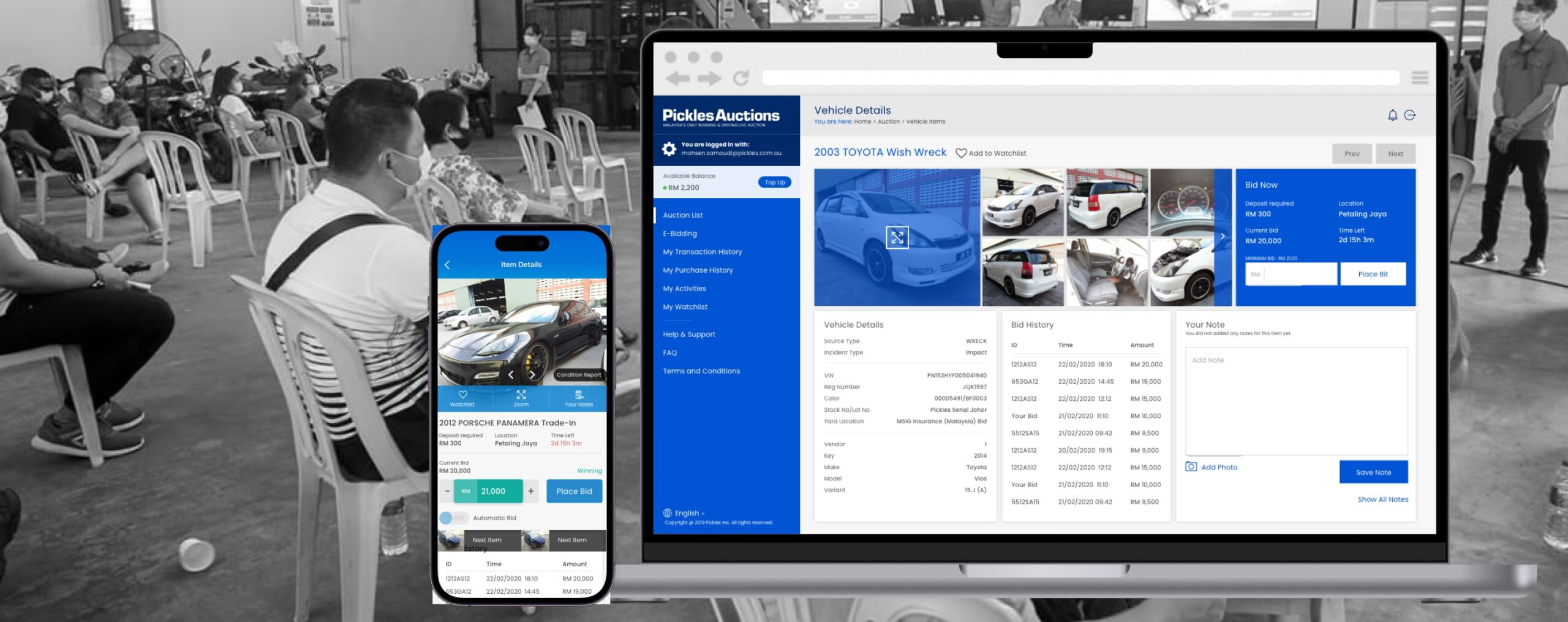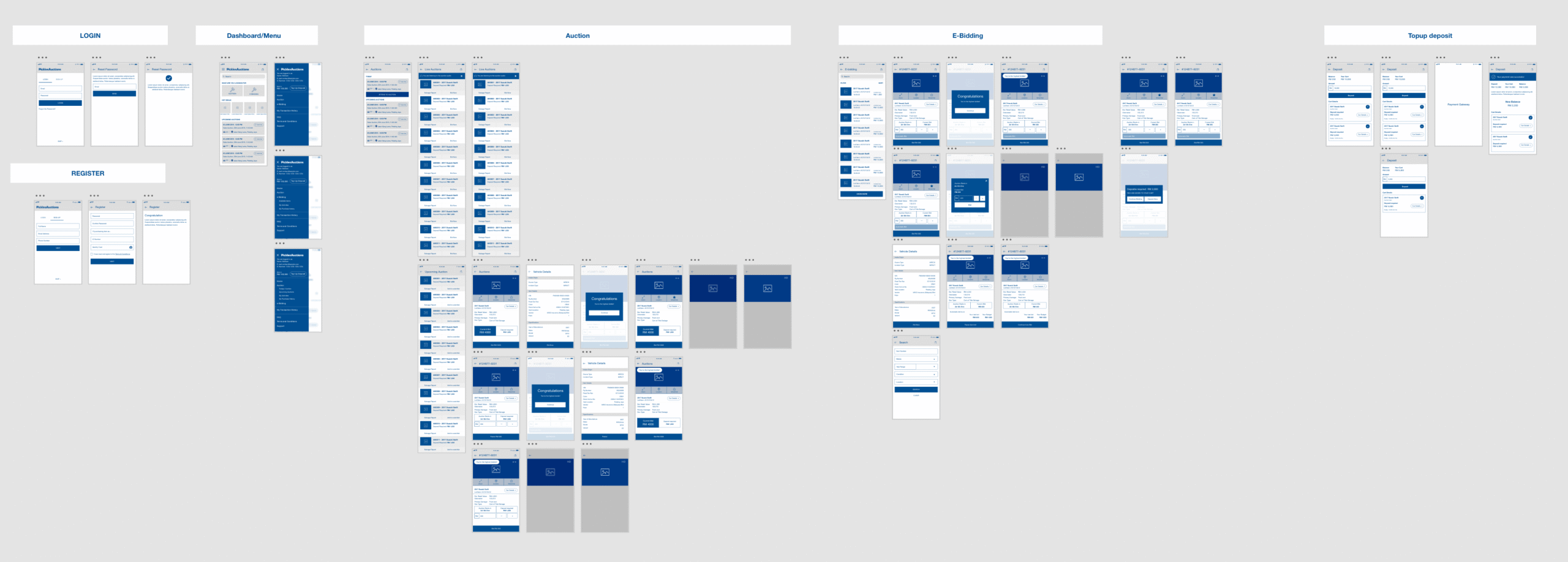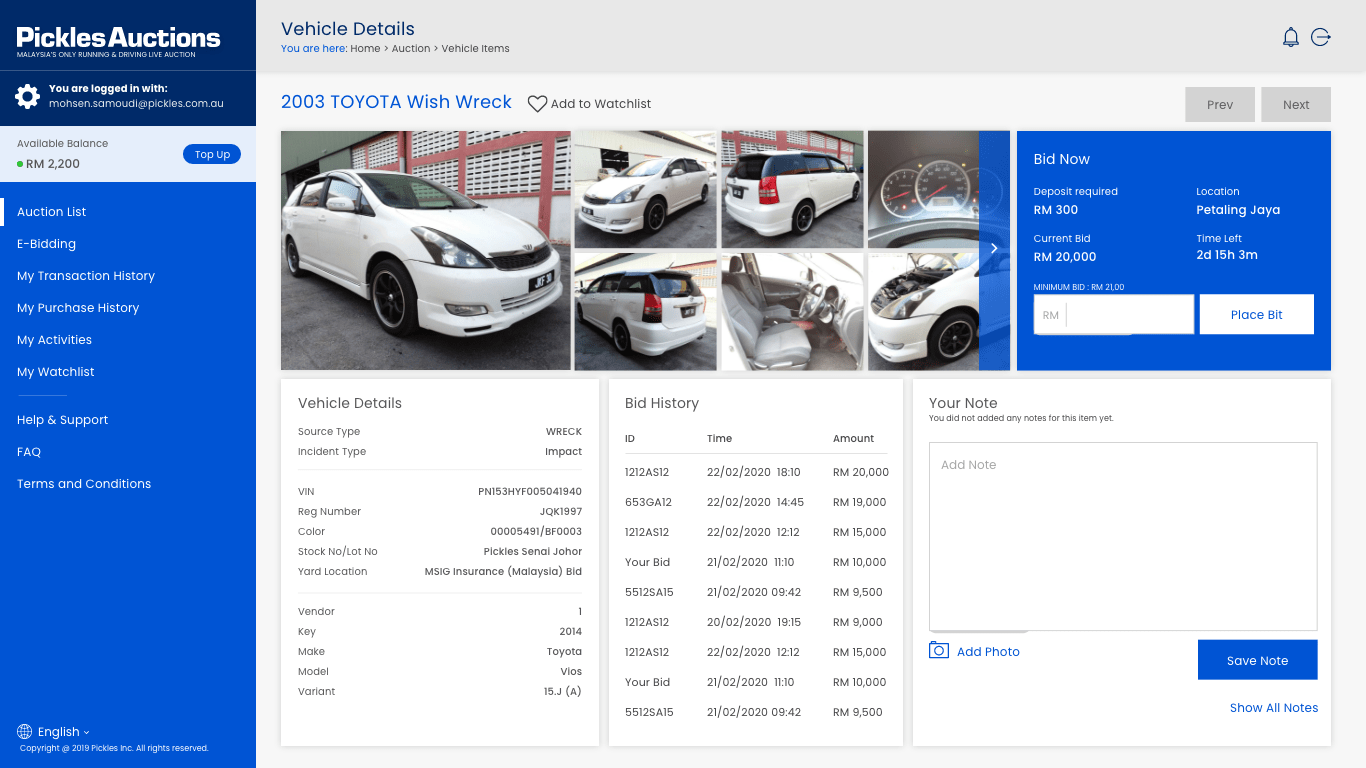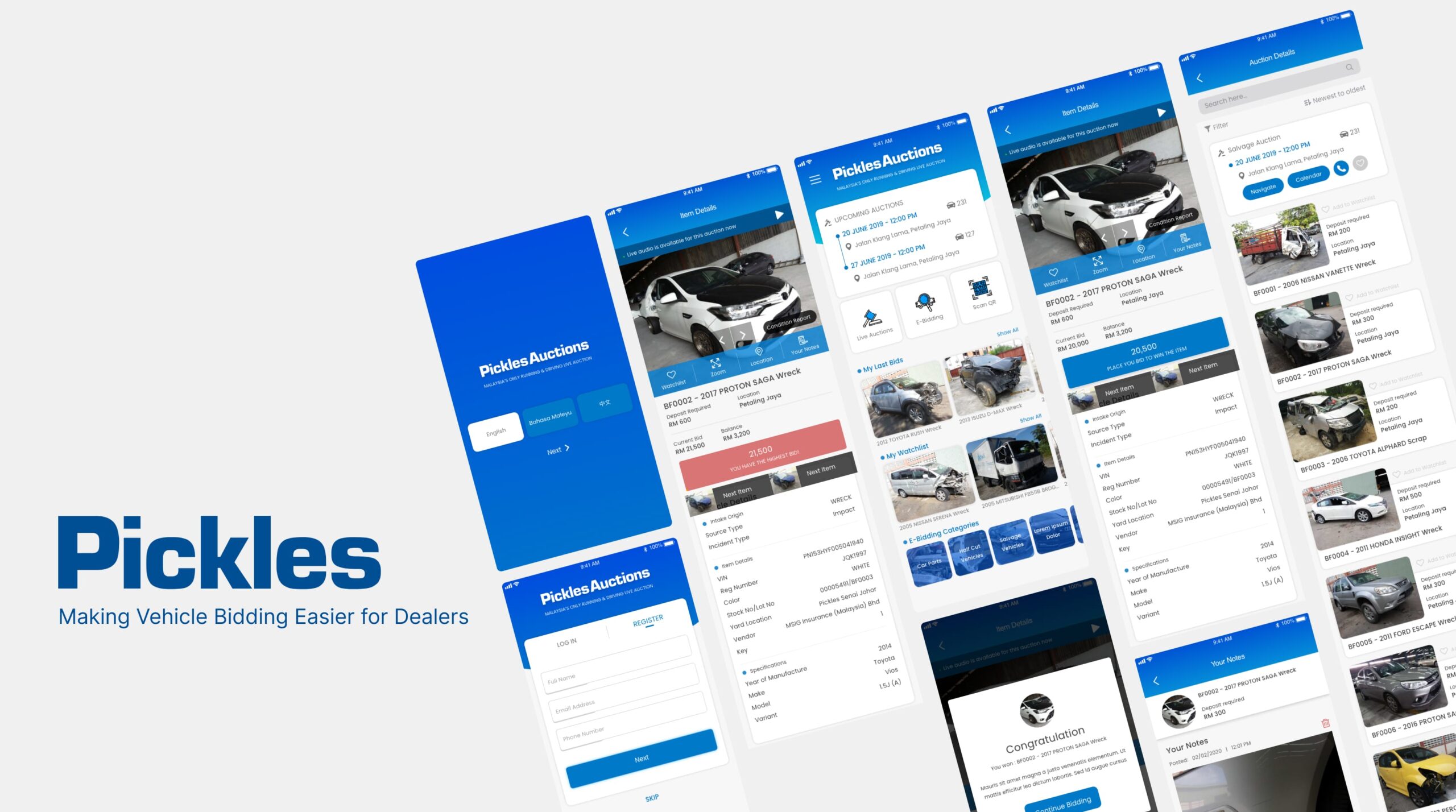My Role
- Product Designer
Credits
- Company — Pickles Venture

The Challenge
Digitizing Pickles Asia’s vehicle auctions came with several key challenges:
- Outdated Workflow: The existing process was manual and fragmented, making it hard for dealers to browse listings or place bids efficiently.
- Lack of Real-Time Features: Users couldn’t track live auctions or receive updates during bidding, which reduced engagement and trust.
- Dealer Expectations: Dealers expected a fast, mobile-friendly experience — but the current platform wasn’t optimized for responsiveness or usability.
- Cross-Device Access: Many users switched between desktop and mobile, so we needed a seamless experience across devices.
- Business Alignment: The platform had to support localized workflows in Malaysia while staying consistent with the parent company’s system in Australia.
These challenges shaped our priorities — speed, clarity, and a dealer-first experience that worked at auction pace.

The Solution
To redesign the Pickles Asia platform effectively, I started by getting close to the people who used it daily. I conducted interviews with dealers and internal staff to understand their pain points, habits, and auction-day routines. Based on these insights, I created detailed personas — and even spent time in-house during live auctions to see how they worked, moved, and made decisions under pressure.
This immersive approach helped us design with empathy and accuracy. Key improvements included:
- Live Auction Features: Real-time updates, countdowns, and bid notifications gave users the confidence to act quickly and stay informed.
- Simplified Browsing: We streamlined the vehicle discovery process with better filtering, search, and image presentation.
- Dealer-Focused UI: The interface was made cleaner, faster, and mobile-friendly — supporting quick decisions even in busy environments.
- Cross-Device Experience: We ensured the platform worked seamlessly across desktop, tablet, and mobile, so dealers could stay connected wherever they were.
By grounding every design choice in real user behavior, we delivered a tool that felt intuitive, fast, and tailored to how dealers actually work.

Process & Prototyping
We started with low-fidelity wireframes to sketch out the layout for the interactive walls and tablets. These helped us test ideas quickly and get early feedback.
Next, we mapped out key user flows — from customers exploring the AF1 story to those ready to buy or leave a message. This helped us understand how different types of users would move through the in-store experience.
Then came the prototypes — interactive mockups of the sneaker wall and touchscreen interface. These allowed us to test functionality, spot usability issues, and fine-tune the experience based on real feedback.
Everything we designed — wireframes, flows, and prototypes — was reviewed and tested with users and stakeholders to make sure it felt intuitive, inclusive, and engaging.


Results
The redesigned auction platform led to noticeable improvements in both user satisfaction and business performance:
- Faster Bidding Experience: Dealers were able to browse, filter, and place bids more quickly — reducing drop-off during auctions.
- Higher Engagement: Real-time features and better mobile support encouraged users to stay active during live auctions.
- Positive Dealer Feedback: Dealers appreciated the simpler UI, better performance, and more reliable experience across devices.
- Internal Alignment: The new design aligned with Pickles Australia’s broader system goals while respecting the needs of the Malaysian market.
Overall, the redesign helped modernize a key business tool, making it easier for dealers to engage — and giving the business a stronger foundation for future features.

